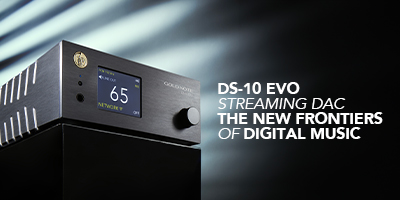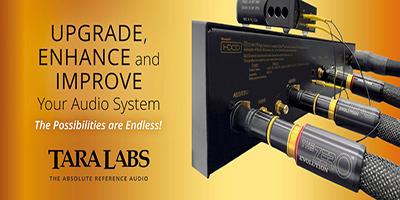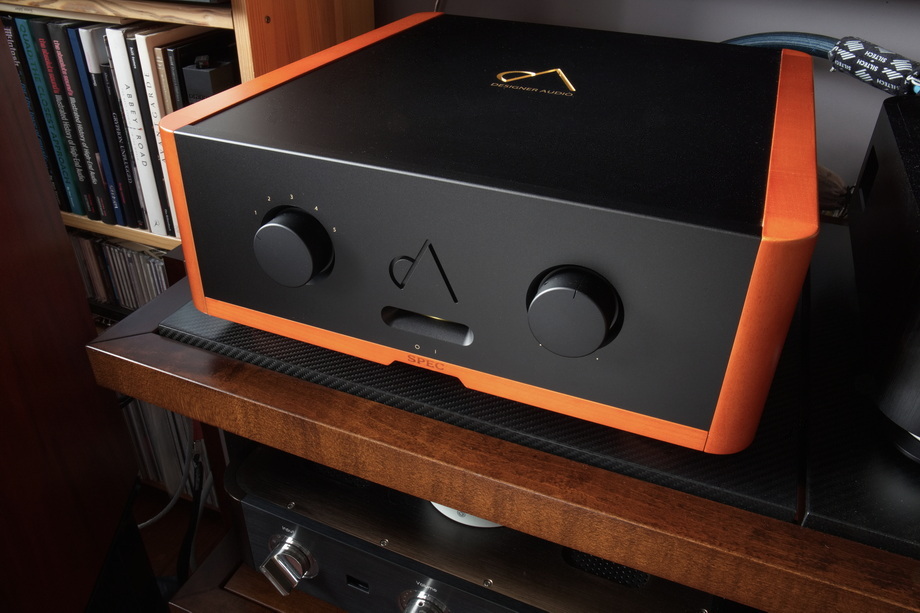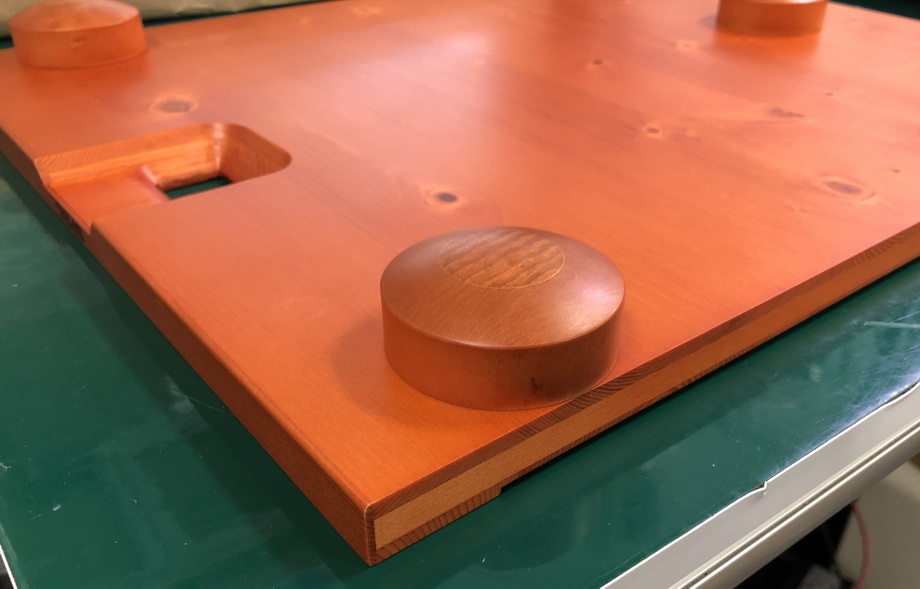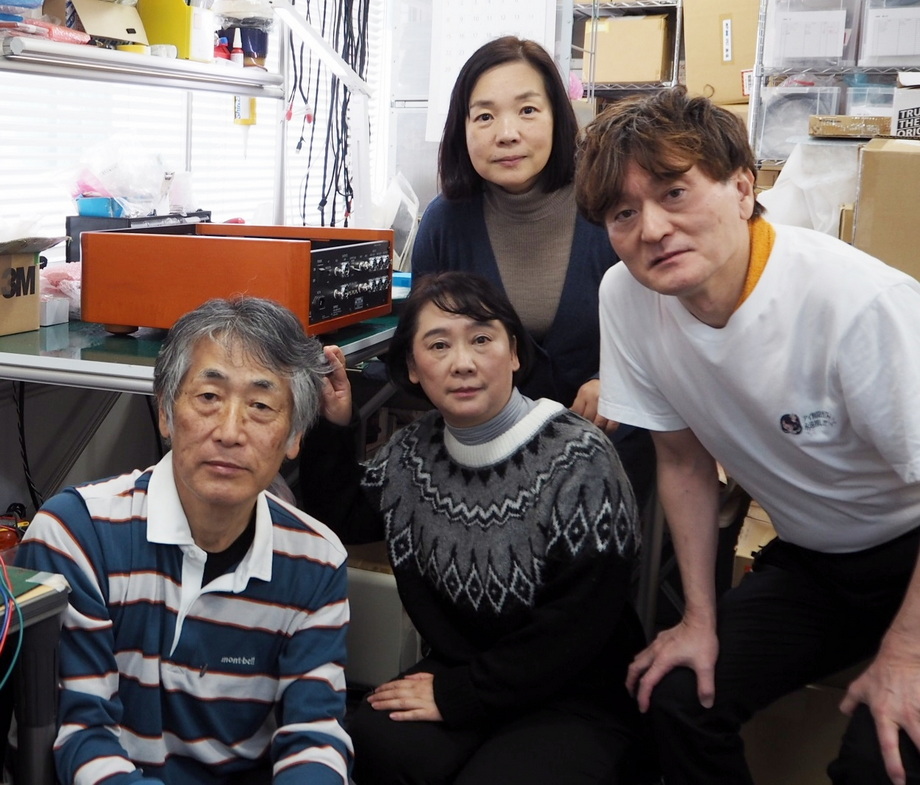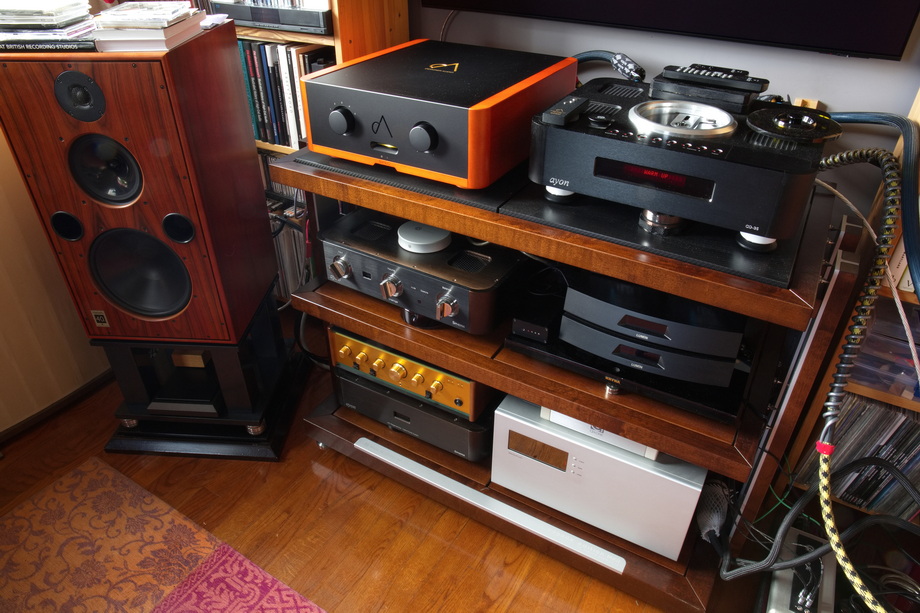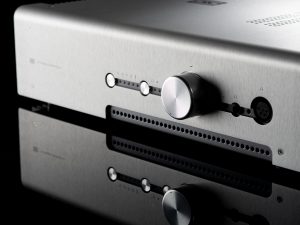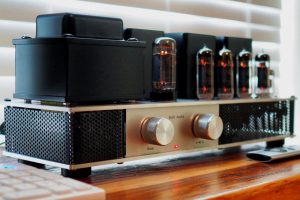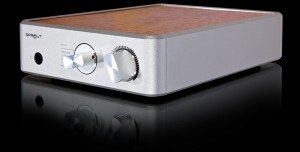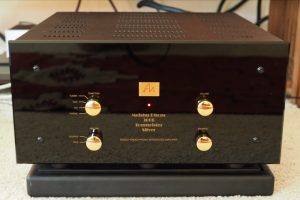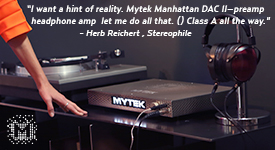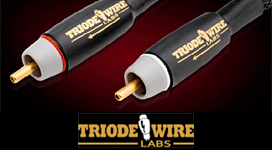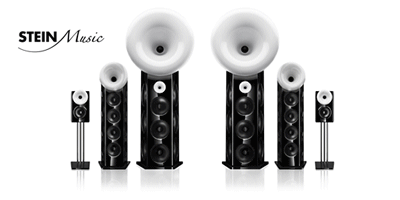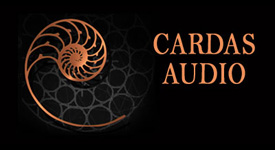SPEC Corporation is a Japanese company founded by Mr. Shuzou Ishimi and run for years by Mr. Shirokazu Yazaki, former chief engineer of TEAC and Pioneer, to realize one goal: to deliver tube sound from solid-state amplifiers. The RSA-EX1000 amplifier is its latest product. It is a top-of-the-line integrated amplifier.
SPEC is one of my favorite brands in the audio world. Maybe I shouldn't say that like you don't tell your children that you love one or the other more, but in this case it's true (of course, I love my children equally, just to be clear. This is not a conscious choice, but rather the result of many factors, resulting in this particular, and not another, perception of this brand by me.
And yet, it seemed to have had an "uphill battle" and from the very beginning. When the brand's chief engineer, Mr. Shirokazu Yazaki, unveiled his first amplifier in 2010, it was a class-D design. For audiophiles at the time, this was a perfect insult - products of this type were considered to be meant for the consumer market, mainly for driving speakers in cars, possibly cell phones, but not for audio. And certainly not for people looking for high end products. SPEC proved them wrong.
According to Mr. Banno Tsutomu, currently the company's chief engineer, the progression in amplification technology looks like this: from tube amplifiers, referred to as "generation 1," through classic solid-state amplifiers, or "generation 2," to the new class-D amplifiers, which are the 3rd generation of amplifiers in general. It, he adds, is something of an "evolution"—from simple to complex "organisms," at least as far as sound is concerned.
And it's not at all that Messrs. Yazaki-san and Banno-san don't like tubes. It is exactly the opposite, they are tube connoisseurs, who designed some wonderful amplifiers of this type. The company's founder has his beloved GEC DA30 amplifier on British PX25A or CV 1178 power tubes, and he also assembles individual tube devices of his idea for friends. The point is simply that they see the new technology's advantages. These are: potentially high sound quality, high efficiency and therefore low power consumption, as well as a kind of elegance, and with it an extremely short signal path.
For them to be used and for it to actually make sense, one must approach the project in the right way and choose the right techniques. Otherwise, it won't work. For them, the key to achieving top sound from semiconductors is their Class D operation. But to achieve that, they had to go for specific active components, surround them with equally carefully selected passive components, design the right power supply, and add a thoughtful enclosure. And, finally, improve with each successive product. This is how one can get where SPEC is today—to the top.
Let's add that we have written many times already about this Japanese company, about its chief engineer—now retired—Mr. Shirokazu Yazaki as well (more in the article titled My Private Audio History, more HERE, and in the test of the Real-Sound Processor RSP-AZ9EX speaker filter, more HERE ).
RSA-EX1000
For a long time SPEC has been refining its idea implemented in their first product, offering better and better amplifiers, but remaining in the idiom of relatively small, almost conservative designs, reminiscent of many others on the market. Except for the internal and mechanical design. With, costing €60,000, the four-piece RPA-MG1000 monoblocks, however, it moved on to completely different positions.
And so the company, known until now for its excellent, expensive amplifiers, developed an amplifier costing even more, being then, that is, in 2019, one of the most expensive amplifiers on the market. Nominally it was a power amplifier, but in practice, it was an integrated one. And it was excellent. Not only did we give it a Gold Fingerprint award, but we also honored it with the Top Sound Award of 2019. Let's also add that this amplifier had its world premiere in High Fidelity.
Mid-2024 a rumor spread around the web that SPEC was finishing preparations for the release of another product from its top series, this time a one-box integrated amplifier. It was to benefit from the experience gained during the design of the RPA-MG1000 and the solutions used in them, but in a single chassis, and with a few improvements.
Banno-san wrote in the email he sent us:
RSA-EX1000, the same as RSP-MG1000, which we presented five years ago, places an emphasis on accurately reproducing the timbre of musical instruments. To properly express the timbre of musical instruments, it is necessary to properly reproduce the finest signals. The RSA-EX1000, in particular, focuses precisely on preserving the finest signals from the sound source.
I wanted to know more so I asked him about the design process of this massive device, which measures 450 x 480 x 18 mm and weighs almost 30 kg. As usual, he responded with a short feature.
A few simple words…
Banno Tsutomu
chief engineer
The background to the evolution of sound quality in SPEC Amp
I think there are two main directions for audio sound creation. One is realistic, and the other is adding a unique taste. In actuality, it's not completely one or the other, but somewhere in between the two.
In the output of the amplifiers, SPEC uses a combination of several different capacitors: on top, mica and oil capacitors from Jupiter Condenser, and underneath, mica, but with the SPEC logo, Arizona Capacitors and electrolytic caps • photo by SPEC
In general, we are aiming for realistic sound, so we base our sound creation on realistic direction, but for example, in RSA-F33EX and others, we add our own taste to touch the heart more beautifully. But I was sometimes also unsure about how much of our own taste to add. I felt that it was difficult to confirm the preferences of people from other parts of the world, especially Europe, while we live in Japan. Our amplifiers have been very well received since the beginning, but I always had questions about whether the amount of unique taste we create is the best, or if there were better ways to do it.
In order to recognize the direction as a designer, it was necessary not only to read the overall evaluation results of a certain model in writing but also to have a "conversation" about how it felt when listening to two different tastes of sound under exactly the same conditions. If the environment, peripherals, songs, and people are different, it is difficult to get impressions that focus on individual elements. In order to further refine our sound, we especially wanted to hear the opinions of people who were in our sales channel.
The output filter features core coils; before them one can see PWM (photo by SPEC)
From 2017 to 2018, we were able to carry out several important listening tests. One was a remote experiment with Piet in the Netherlands. We prepared two types of circuit boards that mainly determine the sound quality of our F33, and after checking the differences in Japan, we sent them to the Netherlands. I had Piet try it out in the F33 and email me his impressions of the difference. Under the exact same conditions, we were able to confirm only the difference in sound between the two types of circuit boards.
This experiment helped clarify the direction I had been wondering about. That was, a natural and realistic direction would be better than strengthening a unique taste. Based on this result, we created a prototype of our high-end power amplifier, the RPA-MG1000. This prototype was equipped with a sound quality changeover switch. Unlike our previous models, the MG1000 has a highly realistic sound, but this switch can add our own taste to that sound. This changeover was both a function of the amplifier and a tool to confirm the direction at the presentation venue.
An inside of the amplifier – one can see shielding around each module (photo by SPEC)
When we presented the MG prototype at the XFI Show in September 2018, people from Galeria Audio in Poland came to visit us. I switched the sound and asked them to listen to it, and everyone said that they preferred a more realistic sound. This was valuable information for me. From these experiments, I became convinced that, at least in the high-end world, a sound with a more realistic base is preferred. Through these experiments, we were able to gain confidence in the concept that "realistic is the most beautiful."
Technical factor of the realistic sound
We aim to create "amps with high musicality." And to achieve this, we think it's important that the timbre is realistic. A beautiful timbre, even if it's a single note, can touch the human heart deeply. For example, I think the long tones of a cello or oboe resonate strongly with the heart.
Mr. Yasuhiro Yamakawa holds a wooden module ready to be installed to the bottom of the device (photo by SPEC)
Music is made up of gathering the musical instruments' tones, so if each individual tone differs from the original, the original musicality cannot be conveyed. The violin must sound like a violin, and the oboe must sound like an oboe in order to faithfully convey the musical expression contained in the "performance." The timbre of an instrument is formed by multiple overlapping harmonics. Furthermore, the level of higher harmonics is very low.
Therefore, in order for audio to properly reproduce the tone of an instrument, it is important that even the minute signals are transmitted to the speaker without being lost. Our amplifiers are designed with an emphasis on keeping minute signals, resulting in realistic tones and highly musical amplifiers.
The amplifier features three feet, each of which is made of a different kind of wood (photo by SPEC)
The RSA-EX1000 has a newly designed main board. By shortening the wiring from the class-D block to the low-pass filter, even the minute signals are kept and transmitted with as little loss as possible. Based on this shortest possible design, many different capacitors are blended to create a realistic timber. (Capacitor blending). A shielded structure is used to protect the minute signals from noise, and the chassis and the inside of shield cases are coated with EMI paint. These techniques allow us to lower the noise floor and bring out the musicality and correct timbre.
When creating the sound, I try to match the timbre of the instruments to real one. The ability to reproduce minute signals is effective not only in reproducing realistic timbre, but also in reproducing stereophonic time differences, resulting in a beautiful, natural, three-dimensional sound.
Finally, let me introduce the team that developed this amplifier:
Tsutomu Banno - circuit design, sound tuning,
Yasuhiro Yamakawa - mechanical designer, production manager,
Masami Takei - design support, procurement of components,
Sonomi Saitou - production and supply manager.
The team, from the left: Tsutomu Banno, Sonomi Saitou, Masami Takei and Yasuhiro Yamakawa (photo by SPEC)
The RPA-AX1000 IS a class D all-analog integrated amplifier. It offers five line inputs including three unbalanced RCA and two balanced XLR ones. Both were sourced from Neutrik and are gold-plated. So do the very good-looking speaker terminals with reduced metal quantity. For two of the inputs, one each RCA and XLR, the input sensitivity can be reduced by 6 dB using small switches. The volume level control and input selection are executed using two, large knobs on the front panel.
In the middle there is an elongated slot with a warm white power on indicator. And we turn it on with a mechanical switch, placed at the bottom, just like in Ayon Audio and other products. And that's it, there are no more switches or knobs, no DAC, Bluetooth, etc. In fact, there is no remote control either. That is, there is, but...
Let me explain. The company's amplifiers are not equipped with remote control as standard. Both, in the past Mr. Shirokazu Yazaki and today Mr. Banno Tsutomu believe that a remote control, or more precisely, the processor controlling it induces noise in the audio circuitry even when inactive. However, to offer a way out of this situation, it was possible to buy an external remote control for the devices, connected by a mini-jack cable. It was a small box that could be placed anywhere.
The same is true this time. Along with the tested amplifier, we receive a simple, not very beautiful cuboid made of aluminum with a few LEDs and an infrared receiver. It also comes with a small, handy remote control with buttons for adjusting the volume and for stepped mute function. However, since, as we said, the control system affects the sound, Mr. Banno wrote to me:
RSA-EX1000 comes with a remote control, but connecting it will affect the sound quality, albeit slightly. Therefore, I would like you to evaluate the sound quality without the remote control. I would appreciate it if you could do so without connecting the remote control cable.
Since the smallest signals are very sensitive and have very low levels, they are easily affected by even the slightest noise. The remote control unit has a built-in microprocessor, so common-mode noise can be transferred to the amplifier. I hope you will think of the remote control unit as a tool, putting convenience first.
And so I did.
The device is really big and is perfectly made. The main thing that draws attention is the chassis. It's a combination of a steel sheet, a thick aluminum plate on the top and front, and wood. The bottom and sides were made from boards used for violin construction. The base was assembled from three pieces, and the feet are each made from a different type of wood. The whole was "tuned"—literally—in listening sessions. So it is important what we put the amplifier on.
Technically, it's simply a power supply with attenuator and power amplifier, with the former taking up the most space. Its base is a massive "R" core transformer with two secondary windings. Each channel uses a separate power supply, and a separate voltage is also routed from the small transformer to the attenuator. The power supplies use oil capacitors in parallel with large electrolytic capacitors. This helps to improve their linearity.
The attenuator is an integrated circuit, selected by the company from the very beginning. The signal is then sent to PWM modulators. SPEC developed the IRS2052SM chip together with the US company International Rectifier specifically for this role. These control small MOS-FET type output transistors. Since it's a class-D circuit, the transistors don't need heat sinks, and heat is dissipated through the entire chassis.
At the output you'll find the classic "reconstruction" filter, mandatory in amplifiers working in Class A, composed of hand-wound coils, selected for the sound they offer, as well as capacitors. SPEC on the subject of capacitors has its own opinion, as already mentioned by Mr. Banno.
Starting with the first amplifier, SPEC's designers have relied on two types of capacitors—oil capacitors from Arizona Capacitors, modeled after the model known from the 1960s, and newer mica capacitors. The latter belong to the MC-DA series and differ in capacitance. However, their appearance is similar—they are large, black cuboids. They are made of laminates, which is supposed to reduce inductance, and the material comes from India; it is the best mica of its kind, "ruby mica." The electrodes in them are made of sputtered silver.
In the tested model they were joined by another ones by the American company Jupiter Condenser. These are capacitors with aluminum foil immersed in oil, but organic oil, which is supposed to affect slightly different measurable parameters and thus sound. Jupiter Condenser is a company that offers both oil capacitors and resistors built according to recipes from the 1940s and 1950s; the latter, for example, are made of aluminum or tin-coated foil and oil-soaked paper. And they bear the familiar name Bumblebee.
SOUND
HOW WE LISTENED
The SPEC RPA-AX1000 integrated amplifier was tested in the High Fidelity reference system. It was compared to a two-box reference amplifier, i.e. an Ayon Audio Spheris III preamplifier and a Soulution 710 solid-state power amplifier. During the test, the unit stood on its feet on the top carbon shelf of a Finite Elemente Pagode Edition Mk II rack.
During the test, I used an Ayon Audio CD-35 HF Edition SACD player and a Lumin T3 file player as sources. The signal between the player and amplifier was sent via Crystal Cable Absolute Dream RCA interconnect. The amplifier was powered by Harmonix X-DC350M2R Improved-Version cable, and the signal to the speakers was supplied by Crystal Cable Da Vinci speaker cable. The SPEC was driving Harbeth M40.1 speakers.
Plugged into the latter are "sound processors," as the company calls them (Real-Sound Processor), in fact circuits to counteract backward electromotive force. Developed by SPEC specifically for amplifiers operating in Class-D, usually with fairly high output impedance , i.e. low output attenuation, they have also proven themselves with classical designs.
For years I've been using RSP-AZ9EX "processor," actually its prototype, which I received at the time, along with Western Electric WE16GA NOS cables and Acoustic Revive banana plugs; more HERE. This time I paired it with the latest version of this product, the RSP-W1EX.
ALBUMS USED FOR THE TEST a selection
Frank Sinatra, Nice'N'Easy, Capitol Records/Universal Music LLC (Japan) UICY-15883, CD (1960/2020).
Takeshi Inomata, The Dialogue, Audio Lab. Record/Octavia Records OVXA-00008, SACD/CD (1977/2001), more HERE.
Happy End (はっぴいえんど), Hapy End (はっぴいえんど), URC Records/Sony Music Labels MHCL 30914, BSCD2 (1970/2023), reviewed HERE.
Vangelis, Blade Runner, soundtrack, dir. Ridley Scott, Atlantic Records/Audio Fidelity AFZ 154, Limited Numbered Edition No. 2398, SACD/CD (1982/2013).
Mayo Nakano Piano Trio, Miwaku, Briphonic BRPN-7007GL, Extreme Hard Glass CD-R (2017); more HERE.
Stan Getz/Joao Gilberto, Getz/Gilberto, Verve/Lasting Impression Music LIM K2HD 036, K2HD Mastering, 24 Gold Direct-from-Master Edition UDM, Master CD-R (1964/2009).
Paul Butterfield Blues Band, Paul Butterfield Blues Band, Elektra/Audio Fidelity AFZ 154, Limited Numbered Edition No. 0115, SACD/CD (1965/2014).
When the first notes of the title track from Frank Sinatra'S Nice'N'Easy album sound all the tension momentarily leaves me. Somehow, that's what happens to me every time. It's not because Sinatra "automatically" means some sort of rest and relaxation, after all, he has sad, difficult, and usually explosive, rhythmically strong songs in his repertoire. But just this album works on me like a well-chosen combination of place, people around me, food and drink. The ideal.
Interesting, but when I heard its first bars with SPEC's amplifier next to the calmness, because it was more "next to" than "behind", I also felt an emphasis on energy. For unlike with the MG1000 monoblocks, the new model from this Japanese manufacturer is not unambiguously warm. Perhaps I misspoke, not "unequivocally," after all, the monoblocks tended to suggest warmth rather than fall into it, but still less tilted in that direction. Whether it's a matter of choices during tuning, or the result of shortening the signal path, or whether it's a matter of yet other measures, but something is afoot: this is an amplifier that presents a different character of sound than most of the company's devices I've listened to so far.
But one step at a time. The EX1000 is an amplifier with an incredibly rich tonal palette. It is a generator, if I may say so, of meanings, nuances, small differences. And it is these that make us perceive the sound as natural. One could even say organic. The device has an open sound, it doesn't round off the upper midrange and doesn't boost its lower part, which is also how it differs from the MG1000. It does so without brightening, which is very cool. Sinatra's voice, the strings on the left, the piano on the right, all these sound sources were silky smooth. And at the same time clear.
The perfectly differentiated reverberations made it easy to put in one's head the "view" of the Capitol Studio A in Hollywood, where this recording was made. Although Sinatra stood facing the orchestra, surrounded on three sides by screens, the orchestra itself looked just as we hear it. And each group of instruments had its own "space," a separate "place," and yet they "blended" perfectly with the rest, neatly weaving a thick, deep, one might say "fluffy" kilim suspended behind the vocals. And the latter was the most important in all of this.
While Sinatra's album relaxes me, The Dialogue by jazz drummer Takeshi Inomata is a "wake-up call" for me. It's a volcano of energy, despite the fact that, after all, all the tracks are a recording of just the leader and his invited guest, either with double bass, or flute, or guitar. The album, recorded at Tokyo's Lino Hall by Mr. Okihiko Sugano, is an example of how the dynamics of instruments can be captured in their natural acoustic environment—Mr. Sugano did not use any reverberation systems; for more on the techniques he used, see the article introducing his profile HERE.
The Japanese amplifier transmitted this energy effortlessly. Yes, that's the thing that came to mind as soon as the first drum beats rang out in the album's opening The dialogue with bass. Contrary to popular belief, Class-D amplifiers compress the punch, the attack of the signal—some more, others less, but they always do. They can give off a lot of energy in a short period of time, that is, "slam it down," but they do so by putting out some of the energy of the leading edge, with the emphasis on sustain. SPEC does this absolutely effortlessly, resembling class-A amplifiers in this.
And that's another surprise I got from the EX1000. We're talking about an amplifier that is incredibly transparent on the one hand, and saturated on the other. It doesn't weigh down the lower midrange like my reference system, nor is it as dense in the bass. That's not because it does it wrong, but it does it differently. Shoi Yokouchi's guitar in the relevant dialogue on the aforementioned album, therefore, had a clear texture. Not just the body, of course, but also the strings. And after that, the percussion was exceptionally clear—it was energetic, it was dynamic, it was thrilling.
So we are talking about an energetic, open sound with strong textures. It's also a smooth sound. A thing I emphasize in every test of a good Class D amplifier. It's something that most classic designs, whether Class A or AB, can't do. And the tested amplifier does it absolutely effortlessly, in which it resembles a reference system. Not quite as saturated, not quite as weighted and rich, yet equally velvety when it needs to be, and also crisp and resolving.
And it is the resolution that sets it apart, even from other ultra-high-end devices. For a very long time, amplifiers of this type had a problem with this feature of sound. But for some time now, more and more Class D designs have been playing with as much internal complexity, as much textural complexity, as the best tube amplifiers. While circumventing many of their problems. Not all of them, but enough to speak of a paradigm shift.
For both the piano in Manhã de Carnava, the opening track of the Mayo Nakano Piano Trio'S Miwaku album, and the percussion, so important on it, had a clear, distinct drawing, and yet were somehow "rounded." Not by a lack of anything, but just somehow I see it as an excess. As if they were saturated a level higher than full transparency would imply. But maybe that's why they sound so natural—maybe not exactly neutral, but incredibly normal.
And perhaps it is this "normality" that defines this amplifier most fully. It's a sound that we "walk into" without any warning. We hear the voice of João Gilberto in the Getz/Gilberto album's opening The Girl From Ipanema and momentarily "jump" into this world, how different from what we have just heard. Darker, denser, less selective. And at the same time even more saturated, even more "smoky." The SPEC opens it up a bit, shows more detail. It defines the percussion sounds more clearly, the higher pitches of Astrud Gilberto's voice, opens up the guitar more strongly, the tape noise can also be heard more clearly.
But all this happens in comparison with a reference system, which is quite dark. Almost every other comparison will come out "a little" differently. A bit like listening to a high-end tube amplifier with a single 300B tube in the output stage. Or maybe not so "a little" at all. And at the same time with much more freedom to drive really difficult speakers, like the Harbeth M40.1. This is an amplifier that—and I go back to the beginning of the test—plays effortlessly.
And when in Main Titles, the opening track of Vangelis's Blade Runner album, underneath the other sounds, all the while, there is a kind of "thunderstorm," some kind of low vortex, that gives the whole thing a mood of uncertainty and anxiety, the SPEC RSA-EX1000 conveys this vortex with a depth and scale that tube amplifiers, even with high-efficiency speakers, cannot render.
Summary
The amplifier I have presented to you is one of the world's leading devices of its kind. It is extremely versatile without being bland. Mr. Banno talked about how he ultimately opted for a more "natural" sound, with less emphasis on a "sound of its own." But it's still a characteristic sound, it's some "sort of" sound. Less "own" than the RPA-MG1000 monoblocks, but perhaps because of that—more versatile.
It's a device that plays in an open way, a resolving way and, most importantly, a saturated way. It does not energize the lowest frequencies to the same extent as the reference system. It plays slightly lighter, but also clearer bass. Also the highs are strong, dense, sonorous, selective. But they too have the sweetness we associate with tubes.
Well, and then there is dynamics, which we can also understand as energetic. Or maybe there is dynamics "above all." It's a volcano if energy! And this is true regardless of whether we are listening to calm bosa nova or albums like Paul Butterfield Blues Band. We start playing Shake Your Money-Maker (by the way, that's a title straight out of contemporary rap records) from the band's debut album and you'll know what I'm talking about. An excellent, beautiful amplifier. So it joins the MD1000 monoblocks with a well-deserved Gold Fingerprint.
Technical specifications (according to the manufacturer)
- Nominal output: 300 W/4 Ω | 150 W/8 Ω
- Frequency range: 10 – 30 000 Hz (+/- 1 dB)
- THD: 0.02% (1 kHz, 80% output)
- Dimensions (W x H x D): 450 x 170 x 430 mm
- Weight: 27 kg
Price (when reviewed): 29 000 EUR
SPEC
6th Fl. Shin Kioi-Chobuilding
4-1 Kioi-Cho Chiyoda-Ku
Tokyo 102-0094 JAPAN
MADE IN JAPAN
Provided for test by: SPEC CORPORATION
text WOJCIECH PACUŁA
translation Marek Dyba
images SPEC / 原澤 直希, High Fidelity

